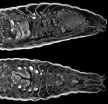(Press-News.org) For the first time, scientists have developed an early warning system to predict the risk of dengue infections for the 553 microregions of Brazil during the football World Cup. The estimates, published in The Lancet Infectious Diseases, show that the chance of a dengue outbreak is enough of a possibility to warrant a high-alert warning in the three northeastern venues (Natal, Fortaleza, and Recife) but is likely to be generally low in all 12 host cities.
Dengue is a viral infection that is transmitted between humans by Aedes aegypti mosquitoes. In some cases, it causes life-threatening illness. There are currently no licensed vaccines or treatments against dengue. So far this century, Brazil has recorded more cases of dengue fever than anywhere else in the world, with more than 7 million cases reported between 2000 and 2013.
"Recent concerns about dengue fever in Brazil during the World Cup have made dramatic headlines, but these estimates have been based solely on averages of past dengue cases. The possibility of a large dengue fever outbreak during the World Cup, capable of infecting visitors and spreading dengue back to their country of origin, depends on a combination of many factors, including large numbers of mosquitoes, a susceptible population, and a high rate of mosquito-human contact", explains lead author Dr Rachel Lowe from the Catalan Institute of Climate Sciences in Barcelona, Spain.*
In particular, climate has an important effect on dengue transmission in epidemic-prone areas where temperature and rainfall drive both mosquito and virus transmission dynamics. The risk of an epidemic increases shortly after a season of heavy rainfall, as occurred in the Amazon during the summer in Brazil.
"Our aim was to take the available evidence on real-time seasonal rainfall and temperature forecasts, transmission dynamics, and social and environmental variables (e.g., urbanisation), and combine it with the latest in mapping and mathematical modelling to produce robust risk estimates for the 12 host cities where matches will be played", says Dr Lowe.*
The researchers estimate little risk of dengue outbreaks during the forthcoming World Cup period in the southern and central capitals of Brasília, Cuiabá, Curitiba, Porto Alegre, and São Paulo. However, they predict that there is some chance of dengue risk exceeding medium levels in Rio de Janeiro, Belo Horizonte, Salvador and Manaus. The three cities with the highest risk are Natal, Fortaleza, and Recife, although the risk still remains relatively low.
According to Dr Lowe, "The ability to provide early warnings of dengue epidemics at the microregion level, three months in advance, is invaluable for reducing or containing an epidemic and will give local authorities the time to combat mosquito populations in those cities with a greater chance of dengue outbreaks."*
Writing in a linked Comment, David Harley and Elvina Viennet from the Australian National University in Canberra, Australia say, "Travellers, particularly those attending matches in high-risk cities, identified as Recife, Fortaleza, and Natal by Lowe and colleagues, might return home with dengue… Those who return home unwell will seek treatment. Doctors must be aware of causes for febrile illness in World Cup spectators… We expect that few spectators will originate from tropical low-income and middle-income countries, and those who do will probably be wealthy, able to access good medical care, and likely to protect themselves from mosquito bites. Even in those who infect mosquitoes on their return, most will live in dengue endemic countries where the introduction of Brazilian dengue virus will make little difference to local epidemiology. Perhaps a few will return to tropical centres in wealthy countries where A aegypti is present but where the incidence of dengue is low. One such example is Cairns in far north Queensland, Australia, where dengue epidemics causally linked to, but geographically distant from, the World Cup in Brazil are possible."
INFORMATION:
NOTES TO EDITORS:
The study was funded by European Commission's Seventh Framework Research Programme projects DENFREE, EUPORIAS, and SPECS; Conselho Nacional de Desenvolvimento Científico e Tecnológico and Fundação de Amparo à Pesquisa do Estado do Rio de Janeiro.
*Quotes direct from author and cannot be found in text of article.
The Lancet Infectious Diseases: New early warning system predicts dengue fever risk during the soccer World Cup in Brazil
2014-05-17
ELSE PRESS RELEASES FROM THIS DATE:
Watching HIV bud from cells
2014-05-17
SALT LAKE CITY, May 16, 2014 – University of Utah researchers devised a way to watch newly forming AIDS virus particles emerging or "budding" from infected human cells without interfering with the process. The method shows a protein named ALIX gets involved during the final stages of virus replication, not earlier, as was believed previously.
"We watch one cell at a time" and use a digital camera and special microscope to make movies and photos of the budding process, says virologist Saveez Saffarian, an assistant professor of physics and astronomy and senior author of ...
MicroRNA that could be used to suppress prostate cancer progression found
2014-05-17
CINCINNATI—About one in seven men will develop prostate cancer over the course of a lifetime, and about one in 36 men will die from it.
This is why findings by Cincinnati Cancer Center researchers, showing that a tumor suppressive microRNA, when activated by an anti-estrogen drug, could contribute to development of future targeted therapies, are important.
These findings are published in the May 16, 2014 edition of the journal PLOS ONE.
"MicroRNAs, or miRNAs, are short RNA molecules that play a prominent role in regulating gene expression. One miRNA can target multiple ...
Breakthrough in HIV/AIDS research gives hope for improved drug therapy
2014-05-17
PITTSBURGH, May 16, 2014 – The first direct proof of a long-suspected cause of multiple HIV-related health complications was recently obtained by a team led by the University of Pittsburgh Center for Vaccine Research (CVR). The finding supports complementary therapies to antiretroviral drugs to significantly slow HIV progression.
The study, which will be published in the June issue of the Journal of Clinical Investigation and is available online, found that a drug commonly given to patients receiving kidney dialysis significantly diminishes the levels of bacteria that ...
Transgenic mice produce both omega-3 and omega-6 fatty acids on carbohydrate diet
2014-05-17
Massachusetts General Hospital (MGH) investigators have developed a transgenic mouse that synthesizes both the omega-3 and omega-6 essential fatty acids within its tissues on a diet of carbohydrates or saturated fats. Called "essential" because they are necessary to maintain important bodily functions, omega fatty acids cannot naturally be synthesized by mammals and therefore must be acquired by diet. Significant evidence suggest that the ratio of dietary omega-6 to omega-3 has important implications for human health, further increasing interest in the development of ...
Gender differences stand out in measuring impact of Viagra as therapy for heart failure
2014-05-17
New animal studies by Johns Hopkins cardiovascular researchers strongly suggest that sildenafil, the erectile dysfunction drug sold as Viagra and now under consideration as a treatment for heart failure, affects males and females very differently.
The results of their investigations in varied male and female mouse models of heart failure are so clear-cut, says lead scientist Eiki Takimoto, M.D., Ph.D., that physicians may need to take gender into consideration when prescribing certain medications and that drug developers would be wise to take them into careful account ...
The early earthworm catches on to full data release
2014-05-17
To quote the American cartoonist Gary Larson: all things play a role in nature, even the lowly worm—but perhaps never in such a visually stunning way as that presented in two papers published today in the open access journals GigaScience and PLOS ONE. The work and data presented here provide the first-ever comparative study of earthworm morphology and anatomy using a 3D non-invasive imaging technique called micro-computed tomography (or microCT), which digitizes worm structures. This opens the possibility of scanning millions of specimens from museum collections, including ...
JCI online ahead of print table of contents for May 16, 2014
2014-05-16
Targeting microbial translocation attenuates SIV-mediated inflammation
Patients with HIV often present with signs of immune activation and systemic inflammation, both of which are hypothesized to directly contribute to the development of AIDs in infected individuals. HIV and the related simian immunodeficiency virus (SIV) damage the gut mucosa, leading to translocation of microbes from the intestinal lumen to the general circulation, but it is not clear if microbial translocation is directly responsible for chronic HIV-associated inflammation. In this issue of the Journal ...
Methadone programs can be key in educating, treating HCV patients
2014-05-16
BUFFALO, N.Y. – People who inject drugs and are enrolled in a drug treatment program are receptive to education about, and treatment for, hepatitis C virus, according to a study by researchers at several institutions, including the University at Buffalo.
That finding, published online this week in the Journal of Addiction Medicine will be welcome news to health care providers. The paper notes that injection drug use is a primary mode of infection, making for an HCV infection prevalence as high as 80 percent among people who inject drugs.
"One of the most important findings ...
Non-invasive lithotripsy leads to more treatment for kidney stones
2014-05-16
DURHAM, N.C. – When it comes to treating kidney stones, less invasive may not always be better, according to new research from Duke Medicine.
In a direct comparison of shock wave lithotripsy vs. ureteroscopy – the two predominant methods of removing kidney stones – researchers found that ureteroscopy resulted in fewer repeat treatments.
The findings were published May 16, 2014, in the journal JAMA Surgery, coinciding with presentation at the annual meeting of the American Urological Association.
"Nearly one out of 11 people in the United States has kidney stones, ...
Cognitive behavioral or relaxation training helps women reduce distress during breast cancer treatment
2014-05-16
Coral Gables, Fla. (May 16, 2014) – Can psychological intervention help women adapt to the stresses of breast cancer? It appears that a brief, five-week psychological intervention can have beneficial effects for women who are dealing with the stresses of breast cancer diagnosis and surgery. Intervening during this early period after surgery may reduce women's distress and providing cognitive or relaxation skills for stress management to help them adapt to treatment.
Researchers at the University of Miami recruited 183 breast cancer patients from surgical oncology clinics ...


